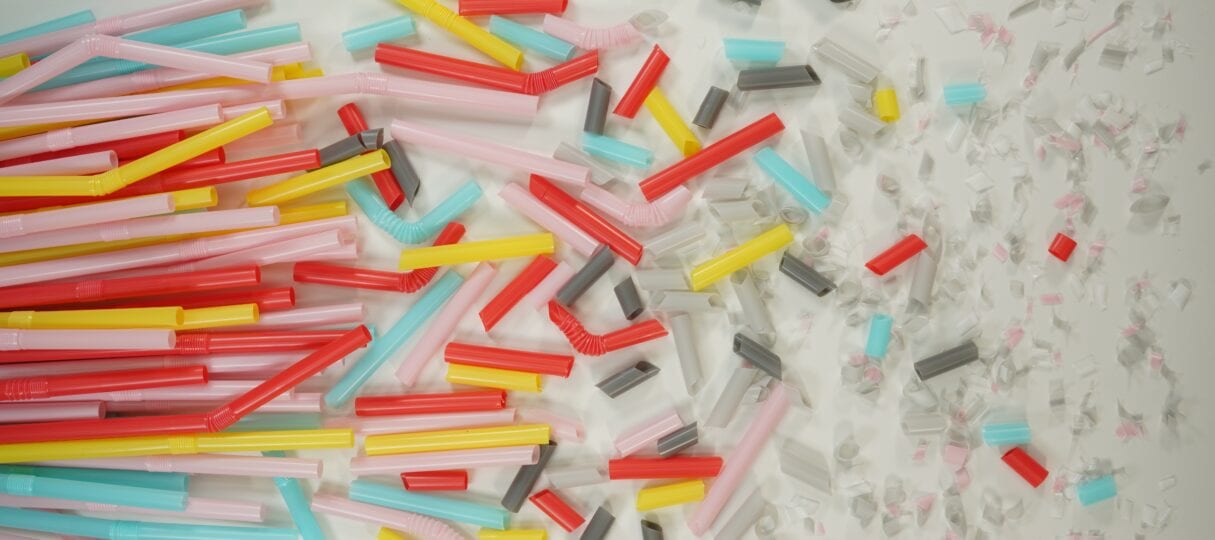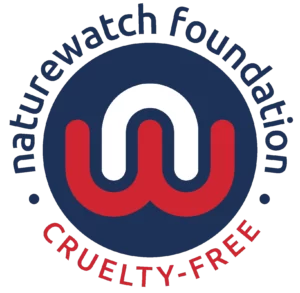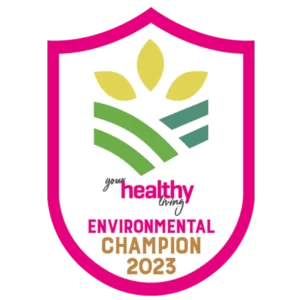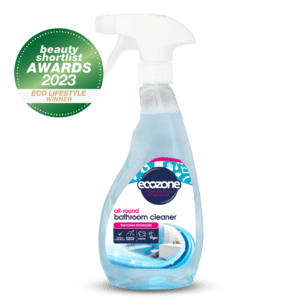Microplastics have been found to be one of the most common plastic polluters. When we think about plastic pollution, plastic bags, plastic bottles and plastic straws come to mind. Only a miniscule amount of plastic we discard gets recycled, and plastic waste that ends up in landfills can take up to 1,000 years to decompose.
However, it’s not just plastic bags we need to worry about. Microplastics are the invisible enemy that have, until now, been underestimated. Research also suggests there are double the number of microplastic particles than we originally thought.
What are microplastics?
According to National Ocean Service, microplastics are “small plastic pieces less than five millimeters long.” Microplastics can be found in a variety of places, from cigarette filters to clothing fibres
A microplastic you may already be familiar with are microbeads: commonly used in beauty products, these tiny plastic beads passed through water filtration systems, threatening aquatic life. The problem became so bad that Barack Obama banned these microbeads from all cosmetic products in 2015. Microplastics like these are known as primary microplastics, as they are manufactured in order to serve a function.
Secondary microplastics come from the breakdown of larger pieces of plastic, like how sand breaks down from a rock. A plastic bottle, for example, will eventually break down into roughly 10,000 microplastic pieces. But how damaging are these microplastics really?
The effect of microplastics…
On Aquatic Life
Plastics affect the growth, fertility and overall health of marine life. The foundation of the marine food chain, zooplankton, are the same size as many of these microplastics. It is even thought that there are more microplastic particles than there are zooplankton in the ocean, which can compromise the entire food chain.
On animals
Because of their diet of aquatic insects, birds have been found to consume hundreds of microplastics a day. According to the Global Change Biology journal, these were mostly fibers, and three quarters were smaller than 0.5mm.
On us
According to research, we consume and inhale these microplastics from our drinking water, salt and the food we eat. While the effects on our own health are unclear, it’s certainly jarring to think what it could be doing to our bodies.
Earth
Microplastics are commonly found in soil. The plastic fragments alter the chemistry of the soil, and crops grown in soil containing microplastics have lower yield, height and root weight. In China, this has already resulted in a decrease in cotton yields.
How can we reduce the production of microplastics?
- Buy less Nylon
Nylon contributes to as much as 60% of all plastic waste. Avoiding clothing made of this and instead opt for natural materials like silk, wool and cotton to reduce microplastic pollution.
- Change your laundry habits
In a single load, more than 1 million microplastic fibers may be released. Try do some of your washing by hand, or on a lower setting to reduce the risk of fibers separating and pulling away. Ecozone’s laundry products are effective on even short, gentle cycles, and our Dryercubes reduce drying time if you would rather use a tumble dryer than hanging your clothes after washing.
- Avoid single-use plastics
Everything made of plastic eventually breaks down into microplastics. Avoiding single use plastics in your everyday life makes a big difference in the long run.
Plastic Free July encourages millions of people every year to reduce their own plastic pollution. By reducing our consumption of single-use plastics, we’ll head towards a cleaner future for our planet and our oceans.
Wondering where to start your plastic free journey? Why not try some of our favourites…
Magnoball
Our Magnoball is a long-lasting product that helps with limescale removal, and is great for use in your washing machine and dishwasher. The non-toxic and septic tank safe Magnoball is a great long term product that can be used in every cycle below 60 degrees.
Oxo-biodegradable bin liners
One of our favourite plastic free products, our bin liners are tear resistant even when wet, and contain a special additive that accelerates biodegradation in landfill, making them a great alternative to traditional plastic bin bags. They also come in 30, 60 and 90 litre sizes!
Refills
Instead of having to buy a new product every time, our refills cut down on the need for buying a new plastic bottle every time your favourite product runs out. At Ecozone, you can buy refills for our Ultra Shower Cleaner, Bin Cleaner Spray, Laundry Liquids and Damp, Mould and Moisture Trap.
We also try manufacture bottles and packaging from PCR plastics in order to eliminate virgin plastics. We’re working on some exciting projects to reduce all plastic across our range, so make Ecozone a part of your plastic free journey.
Explore Ecozone’s growing plastic-free range. If you want to hear more from Ecozone, subscribe to our newsletter.











